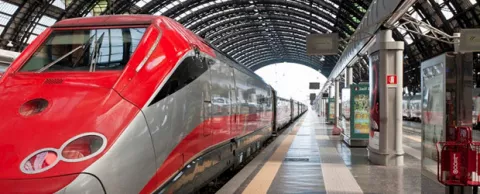
Improving transportation infrastructure and services is a high priority for Australia's cities. As our major centres plan improvements they need to be aware of the interdependencies between transportation systems and energy and communications systems as well as the built environment. The connection between transportation and the built environment is straightforward – roads, rail and ports are typically essential components of a smart transportation system – but can also represent massive construction investments.
In this article, we dive a little deeper into last week's national budget which allocated a record amount to rail. Over the coming years, this investment in city-building, and indeed nation-building, will provide an opportunity to catalyse smart city investments in the urban areas which will be connected. — Adam Beck
The federal 2017-2018 budget released last week includes almost $20 billion for two major rail projects, one to more effectively link Australia's larger cities and regional centres and another to build a long-awaited rail freight corridor.
According to the International Railway Journal, the long-term investment is the largest ever made by the federal government — and came as a pleasant surprise to many in the industry who were expecting much less.
$10 billion of the investment will support a National Rail Programme of rail projects in major cities as part of the government's smart cities plan. The thinking is that rail lines will help cities revitalize themselves and encourage a tighter linkage between land use and transportation planning.
The Melbourne-Brisbane Inland Rail Project, which has been in the works for several years, will get $8.4 billion. The rail corridor will be a high-capacity line for moving freight. A 126 km section of the line between Toowoomba and Kagaru will require a substantial amount of tunneling. This part of the project will be a public-private collaboration with the private sector financing, designing, building and maintaining the line over a long concession time frame.
The balance of the budgeted funds will go to additional projects, including a $500 million investment to improve Victoria's rail infrastructure and $792 million for a suburban rail network in Perth. And some of the funding will be used to develop business cases for a Melbourne Airport rail line and faster, more efficient rail networks between major cities and regional hubs.
Doug Peeples is a Portland, Oregon-based writer specializing in technology and energy. Follow @smartccouncil on Twitter.



